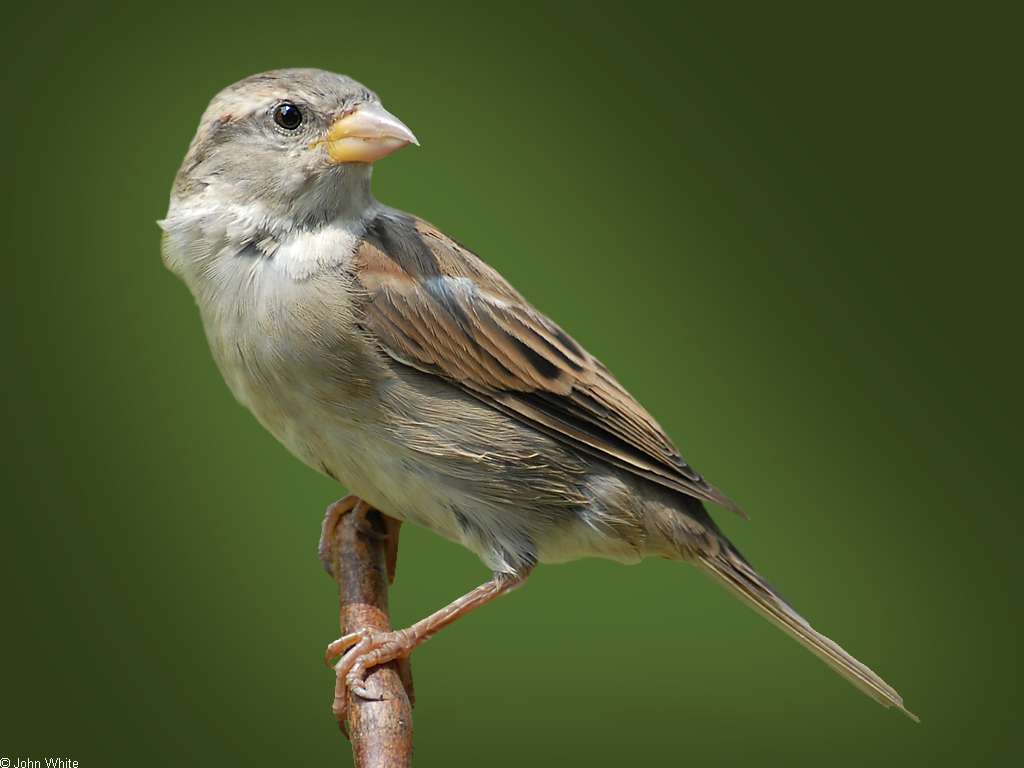 |
| Figure 1 - Passer domesticus - Photo John White |
House sparrow in Australia: P. domesticus was introduced in Australia between 1863 and 1870 from Britain in Victoria, but as a well adapted bird to urban areas this species has spread throughout eastern Australia. The success of this species is because the house sparrow is an opportunistic species which lives around the humans added to variable diet, P. domesticus eats insects, flower, bugs and fruits but the main compound of the diet of this species that characterize their adaptability are seeds and scavenged food waste.
 |
| Distribution of P. domesticus in Australia. |
In Brazil there are some beliefs about the introduction of this species. According to Ihering (1924) the major of Distrito Federal (which was Rio de Janeiro) in 1902-1906 ordered a group of house sparrow wishing increase the number of birds in the city. According to Camargo (1976) the idea was introduce the sparrow to combat some caterpillar species which destroyed the local trees. As happened in Australia this species spread fast around the country.
| Distribution of P. domesticus in Brasil (The colour are Biomes and states separated by black line) |
In United States was not different in the early 1950's the House Sparrow was introduced in New York City, some European immigrants released this bird in their attempt to establish familiar species from their homeland and also to insect control. As happened in many places, this species has spread rapidly and had become established across the contiguous United States (Johnson & Violett, 2009). To sum up, this species is considered good as a potential pest controller but the effects of this species in native species is not calculable.
 |
| Distribution of P. domesticus in US. |
References:
CAMARGO, Hélio F. Almeida - 1976 - Informação sobre o pardal. Suplemento Agrícola, O Estado de S. Paulo, 22 (1076):2, edição de 11 de janeiro.
CAMARGO, Hélio F. Almeida - 1976 - Informação sobre o pardal. Suplemento Agrícola, O Estado de S. Paulo, 22 (1076):2, edição de 11 de janeiro.
IHERING, Rodolpho von - 1924 - Contos... de um Naturalista. Editora Brazão, S. Paulo, 189 pp., il.
Johnson, S. A.,
& Violett, H. (2009). Florida’s Introduced Birds: House Sparrow (Passer
domesticus). Florida: University of Florida.
Websites:
http://www.birdsinbackyards.net/species/Passer-domesticus
http://www.birdsinbackyards.net/species/Passer-domesticus
http://www.dpi.nsw.gov.au/agriculture/pests-weeds/vertebrate-pests/pest-animals-in-nsw/sparrows
http://www.wikiaves.com.br/pardal
http://www.mbr-pwrc.usgs.gov/bbs/htm96/map617/ra6882.html






